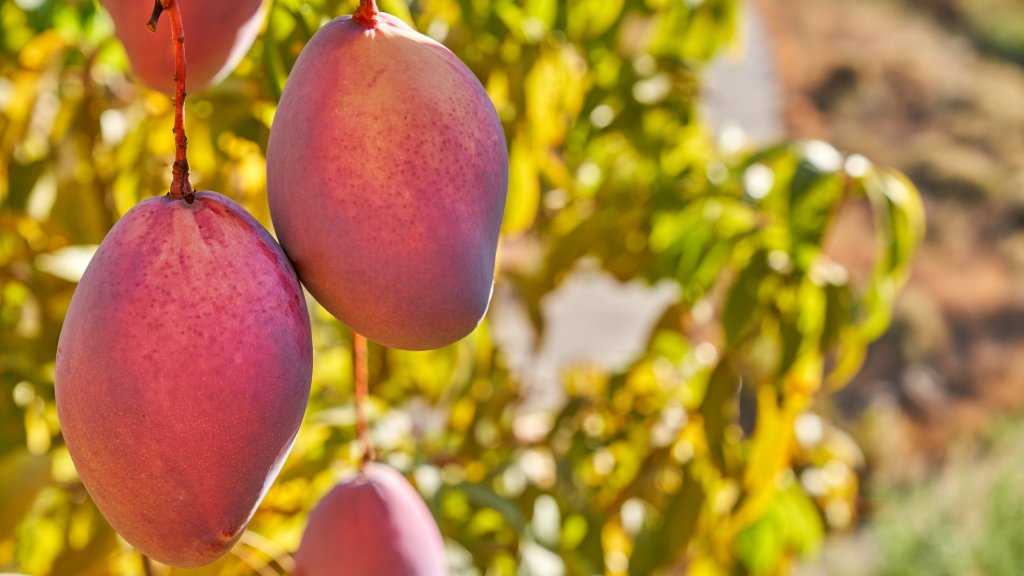Best Subtropical Fruit Trees: 8 Exotic Fruits To Grow In Your Garden
Many subtropical fruit trees thrive in climates that are a bit cooler than tropical regions, but they require special considerations.


Growing your own fruit is an excellent way to diversify a home garden. Determining which species to grow based on your climate may feel limiting. However, if you are living in subtropical regions or places that experience milder winter temperatures, you may have more options than you originally thought.
Some fruit trees thrive under subtropical conditions. Below, we will explore some of the best fruit trees for subtropical climates, learning which are most hardy and which will produce the highest yields.
8 of the Best Subtropical Fruit Trees You Can Grow
1. Avocado
Subtropical plants, like avocado, are a good choice for many gardeners living in regions with mild temperatures. In USDA zones 9-11, avocado trees can easily grow in a backyard or when kept in a large container. A self-pollinating plant, developing avocado fruit can grow quickly, often weighing down or causing branches to break. Experienced avocado growers suggest thinning the plant after the fruit has set and/or providing extra support for the plant as it matures.
2. Banana
Though many ornamental types have been praised for their hardiness to cold, true banana trees require consistent temperatures to set fruit. Bananas grow best in gardens that remain above 60 F (15 C) throughout the year. The plant can withstand brief periods of cooler weather but could be damaged, should the temperature dip too low. Those in subtropical regions growing hardier types have found success protecting the plant during these cooler periods. However, growing bananas still remains a challenge for even the most experienced gardeners.
3. Grapefruit
Like many citrus fruits, grapefruit is a good option for subtropical climates where day and nighttime temperatures are warm. Though the plant is hardy to USDA zone 9, grapefruit plants grown in cooler regions do best when situated near a structure or facing south. Rich, well-draining soil is essential to tree health, as grapefruit plants may languish when conditions are less than ideal. Popular grapefruit varieties include Henderson, Rio Red, and Ruby Red.
4. Guava
Guava trees grow best in subtropical regions that remain free of frost throughout the year. This is especially true of younger trees, which are often more sensitive to cold. Though it is possible to find named cultivars of guava, most are grown from seed. Newly planted seedlings require patience, needing at least 3-4 years before bearing fruit.
5. Lemon
Subtropical trees like lemons are extremely popular among home gardeners. Introductions of new dwarf varieties have helped the plant to gain interest, specifically, among those hoping to grow their own lemons in containers. Tender to frost, this delicate citrus needs protection from cold, except in the warmest of climates. Good drainage is essential, as the plant will not tolerate wet or oversaturated soils. Lemon varieties suitable for the home garden include Eureka, Meyer, and Ponderosa.
Sign up for the Gardening Know How newsletter today and receive a free copy of our e-book "How to Grow Delicious Tomatoes".
6. Mango
Hardy to USDA zones 9-11, successfully growing mango trees depends greatly upon the region. Frost-free climates are best, as the plant is likely to be harmed by temperatures dipping below 30 F (-1 C). Consistently low temperatures may also damage the mango plant’s buds, reducing its ability to set fruit. Many choose to grow mangoes in containers, where they can be moved to a sheltered location to protect the plant from sudden weather changes.
7. Pineapple
Compact and easy to grow, pineapples are an excellent addition to a home landscape. They are also well-adapted to container culture, thriving in large pots. Gardeners beyond their hardiness range of USDA zones 11-12, can expect severe damage to the plants where temperatures dip below freezing. But pineapple plants can be protected easily through the use of mulches, frost blankets, and greenhouses. For best results, pineapples require soil that drains well and is slightly acidic. The fruiting period varies, depending upon planting time, with flower production ranging between 16-24 months.
8. Pomegranate
Pomegranates are among the most hardy subtropical fruits available to home growers, with some cultivars showing tolerance down to USDA zone 8. The attractive foliage and flowers of a pomegranate add value to the ornamental landscape, as well as the garden. Though the plants are prone to damage at lower temperatures, many varieties have survived dips as low as 10 F (-12 C). This makes them an ideal choice for those new to growing subtropical fruits or gardeners hoping to diversify their yards.
Frequently Asked Questions
What is The Difference Between Tropical and Subtropical?
The difference between tropical and subtropical regions can be confusing. Fruit trees that grow in tropical climates are those that are unable to withstand moderate periods of cool weather or frost. Tropical, frost-free zones remain warm throughout the entire year.
Subtropical gardens are those considered to have milder weather during winter but are still likely to experience cooler temperatures and frost on occasion. This makes them ideal for many hardy species of fruit trees that still require long, warm growing seasons.
What Are The Easiest Subtropical Fruit Trees to Grow?
In gardening, determining which trees are easiest to grow depends greatly on the conditions within your own backyard. Many beginner growers find success with plants that are tolerant to cold and well-adapted to a wide range of conditions. Fruits that are suited to growth in containers are often a good option, as they allow a grower more freedom to respond to the plant’s needs as necessary.

Tonya Barnett has been gardening for 13 years. Flowers are her passion. She has transformed her backyard into a cut flower garden, which she regularly chronicles on her YouTube channel http://www.youtube.com/@tonyawiththeflowers.